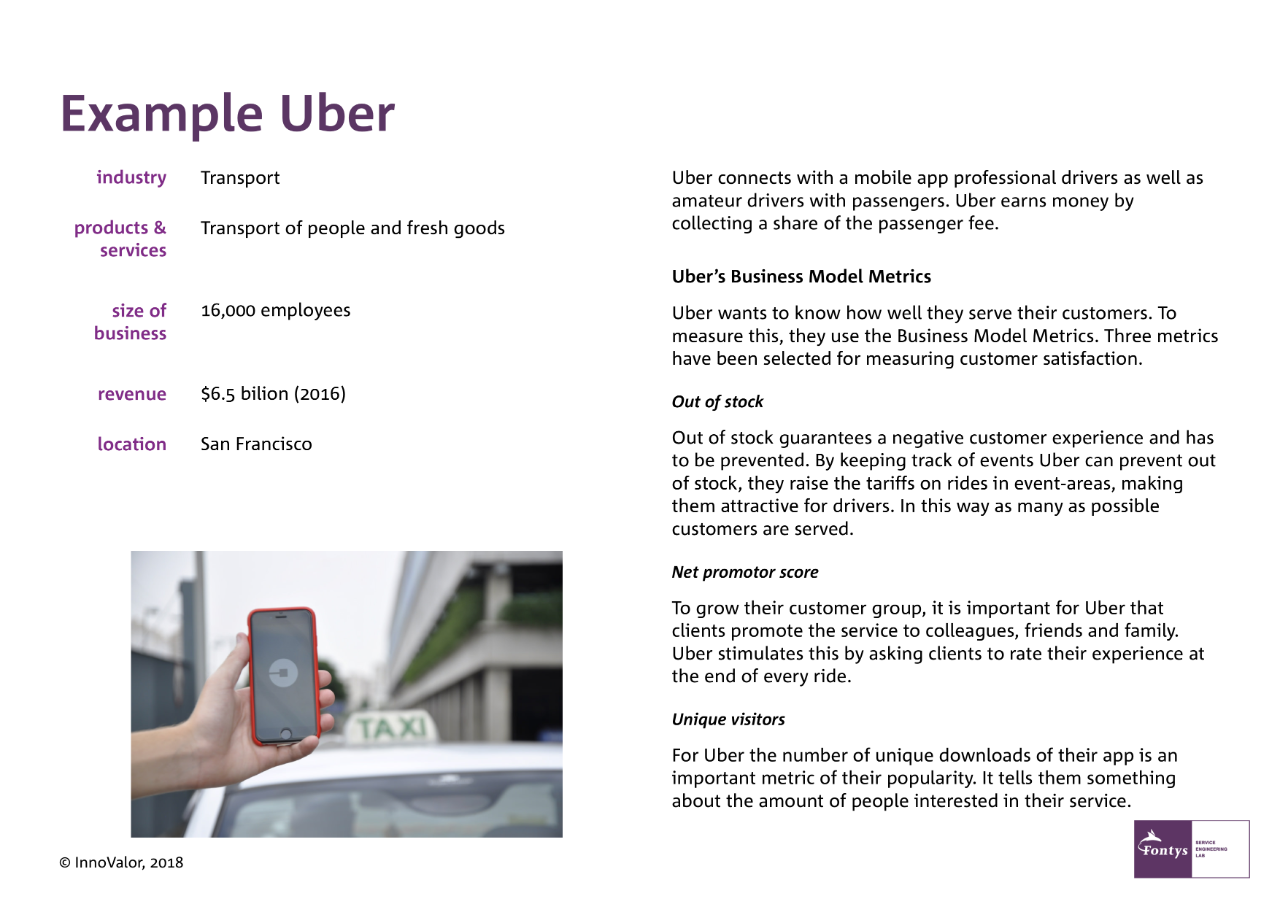Business Model Metrics

Tips for use
The Business Model Metrics can be used individually but also by a group of people. The cards will stimulate and provoke discussion about how you can best measure the performance of your business (idea).
Download the Business Model Metrics to brainstorm about the metrics that are relevant for your business. Take a look at the example for SportsGym to get inspired and learn about the practical application of the cards.
How to use
When you want to innovate or grow your business, it is important to be clear about what you want to achieve. With clear objectives you can define performance indicators or metrics to monitor the progress towards these objectives.
To be of practical use, the metrics have to be ‘SMART’, i.e. specific, measurable, achievable, realistic and timely. The Business Model Metrics help you to set ‘SMART’ metrics for your business.
Categories of metrics
Business Model Metrics consist of a card deck with 32 metrics divided over four categories: service quality, customer satisfaction, online capability and financial viability.
Service quality
Metrics about the quality of your service or products, for example brand awareness or percentage of defects.
Customer satisfaction
Metrics about how satisfied your customers are with your product or service, for example Net Promotor Score (NPS) or cross-sell ratio.
Online capability
Metrics about how you are performing online, for example number of unique visitors or page views for your website.
Financial viability
Metrics about the financial performance of your business, for example profitability or return on investment.
The Business Model Metrics
Each card describes a metric and why it could be important for your business. It also describes how the metric can be measured and monitored in practice. Measurement can be based on:
- Survey: questions to customers to gather quantitative customer data;
- Interview: dialogue with customers to gather deeper customer insights;
- Web/App analytics: analysis of how customers interact with your website or application;
- Data from financial systems: analysis of cash flows, costs and revenues;
- Data from order management systems: analysis of orders and fulfilment;
- Data from production systems: analysis of production process and products;
- Data from helpdesk systems: analysis of customer care.
Business Model Metrics game
An existing or new business (idea) can be used as starting point. Let one of the attendees explain the business. Each player is assigned one of the four categories and receives the eight cards belonging to that category. Each player gets five minutes to choose two cards that he or she feels would be best to measure the performance and progress of the described business. The players then put the cards on the table and briefly explain why they chose them. The metrics with the most convincing arguments can then be elaborated upon.